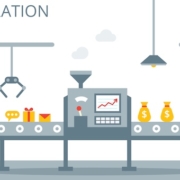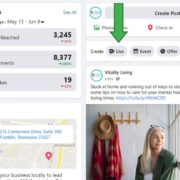Senior Living Sales Tips: Marketing Qualified vs. Sales Qualified
When we work with clients, we love sharing all sorts of senior living sales tips, including definitions of common terms. Ones you’ll hear us talk about a lot: marketing-qualified leads (MQLs) vs. sales-qualified leads (SQLs).
What’s the difference? Let’s dig in!
What is a marketing-qualified lead (MQL)?
Before people “buy” something big and meaningful—whether it’s a new car or a new home in a senior living community—they do their homework. During this stage, they are actively gathering info. They are researching. They are dreaming. Some might have an urgent need. Others might be planning for months or even a year or more from now.
Obviously, if your sales rep were to call any of these folks, the sales rep wouldn’t get very far. Why? Because the prospect hasn’t reached that point in the process where it makes sense for them to engage with a sales person. They haven’t made a decision. They haven’t even whittled down their options. In fact, they might actively hate the idea of talking to a sales person right now, preferring instead to self-direct their buying process.
In other words, they are NOT a qualified sales lead—yet. But their actions demonstrate that they could very well become sales qualified somewhere down the line. But for now, they are a marketing-qualified lead (MQL). They have indicated their openness to educational materials and learning more.
The challenge: making sure MQLs keep your community top of mind so that when they ARE ready to take the next step (like a tour), they remember your senior living community.
One of the best ways to stay top of mind is through an automated lead nurturing program. The marketing-qualified leads will receive a series of emails that speaks to who they are (their buyer “persona”) and where they are in the buying process. Over time, some of these leads will become sales qualified.
What is a sales-qualified lead (SQL)?
A sales-qualified lead means the person has indicated through their actions that they are nearing a decision or have made a decision. For senior living communities, people who are sales-qualified are likely requesting pricing/financing options, tours, conversations with current residents, and the like.
SQLs are handed off to the sales reps to follow up with directly (in person or via phone/ZOOM in the Age of COVID-19).
Why is it important to differentiate MQLs from SQLS?
If you push all leads directly to your sales team, three things can happen:
- The sales team is forced to manage too many leads.
- The sales team makes 2-3 attempts to get in touch with a prospect. At that point, they move whoever they can’t engage with directly to cold/lost leads.
- The prospect gets scared away and disengages because they are not ready for the sales interaction.
Senior living sales teams often fail because they can’t recognize the high-intent leads. Why? Because all leads look the same if they’re pushed over equally. Not to mention, prospects won’t get the types of interactions they’re necessarily looking for, either. In the end, it doesn’t work out for either the sales team or the prospect. The result? BOTH move on.
By identifying and labeling leads as MQL or SQL, however, you move the hottest leads to your sales team while your marketing team works on nurturing the MQLs until they’re ready to take the next step.
No wasted time, no wasted effort. Just better conversions along with happier prospects and happier marketing/sales departments.
Bonus senior living sales tip: Your website needs to speak to MQLs and SQLs.
You’ll have both types of people entering your senior living website. As a result, you need to make it super easy for people to self-identify where they should go.
But here’s a secret: Most senior living websites only offer SQL options (typically in the form of “click to call” or “schedule a tour”). Talk about a wasted opportunity, right? You need a way to capture the MQLs so that you can continue marketing to them. Offering valuable content, such as downloadable brochures, guides, and e-books, will increase web conversions by up to 30% (based on our experience) provided you follow best practices.
Remember, though, that capturing info is just the first step. You need to nurture the MQLs until they are ready for an interaction with the sales team.
For SQLs, you’ll still want to make “Book a Tour” or “Contact Now” visible options on every page. Live chat (true live chat hosted by real, knowledgeable humans) can be another great way to speak with SQLs (and even MQLs who have specific questions).












